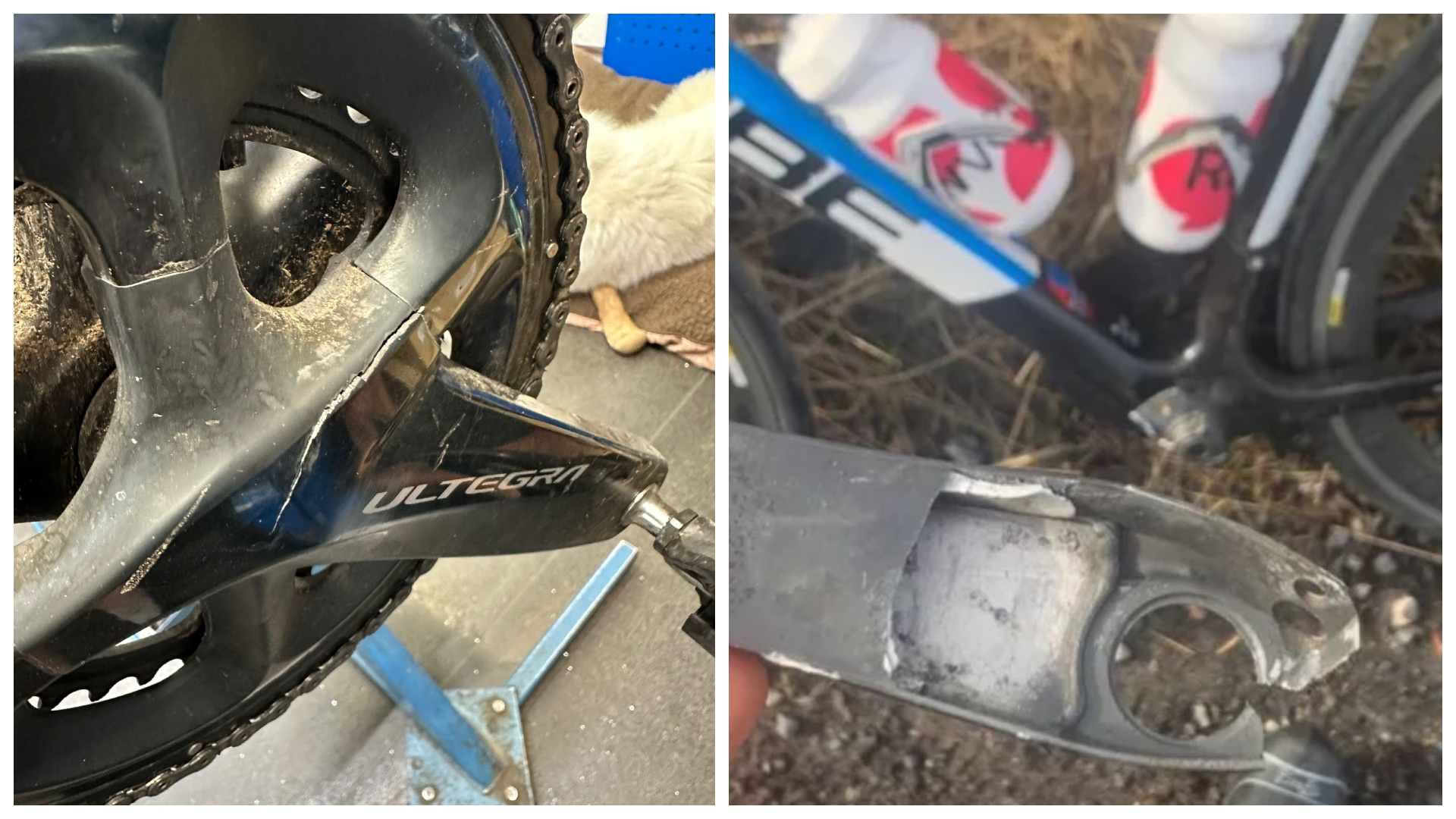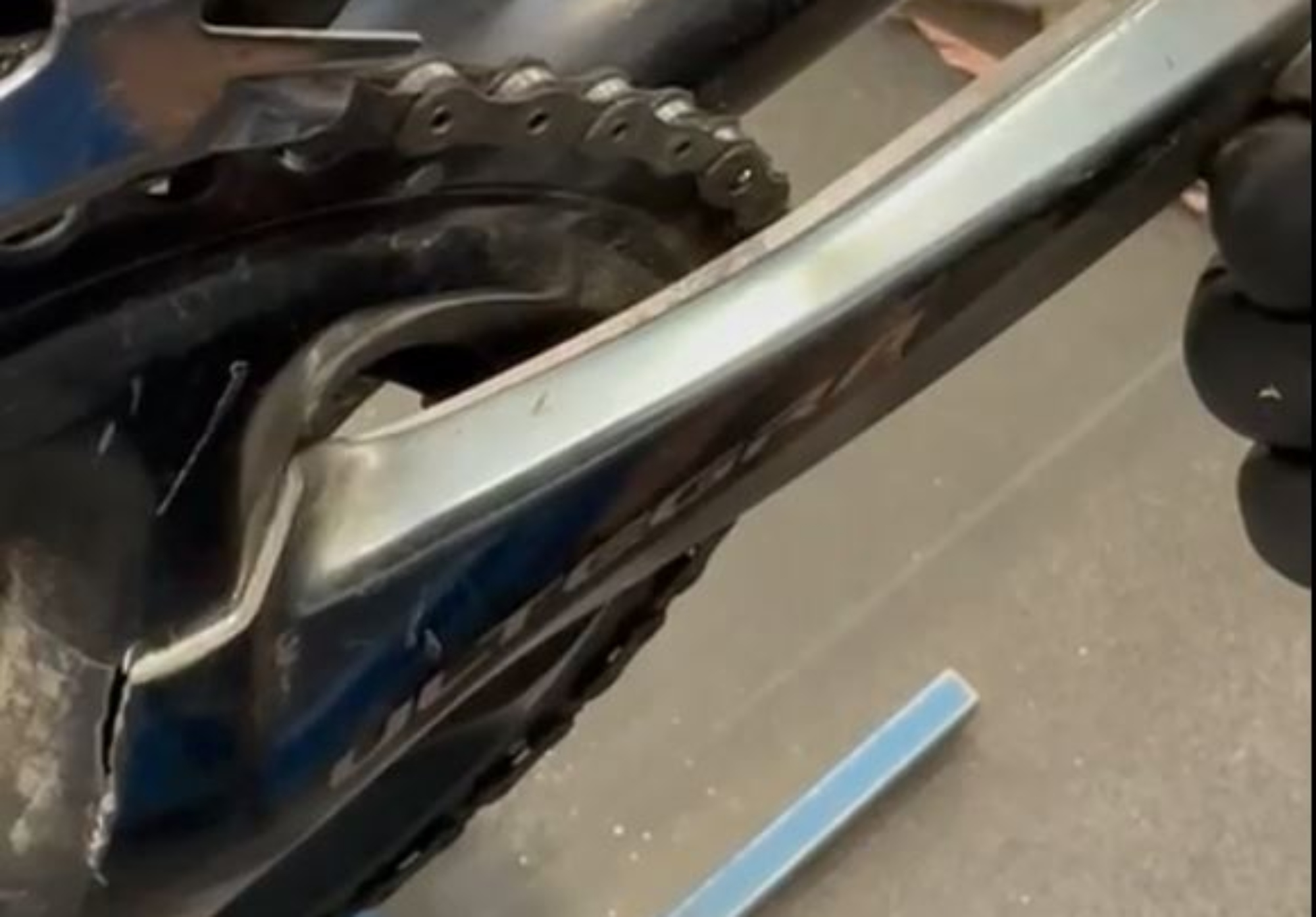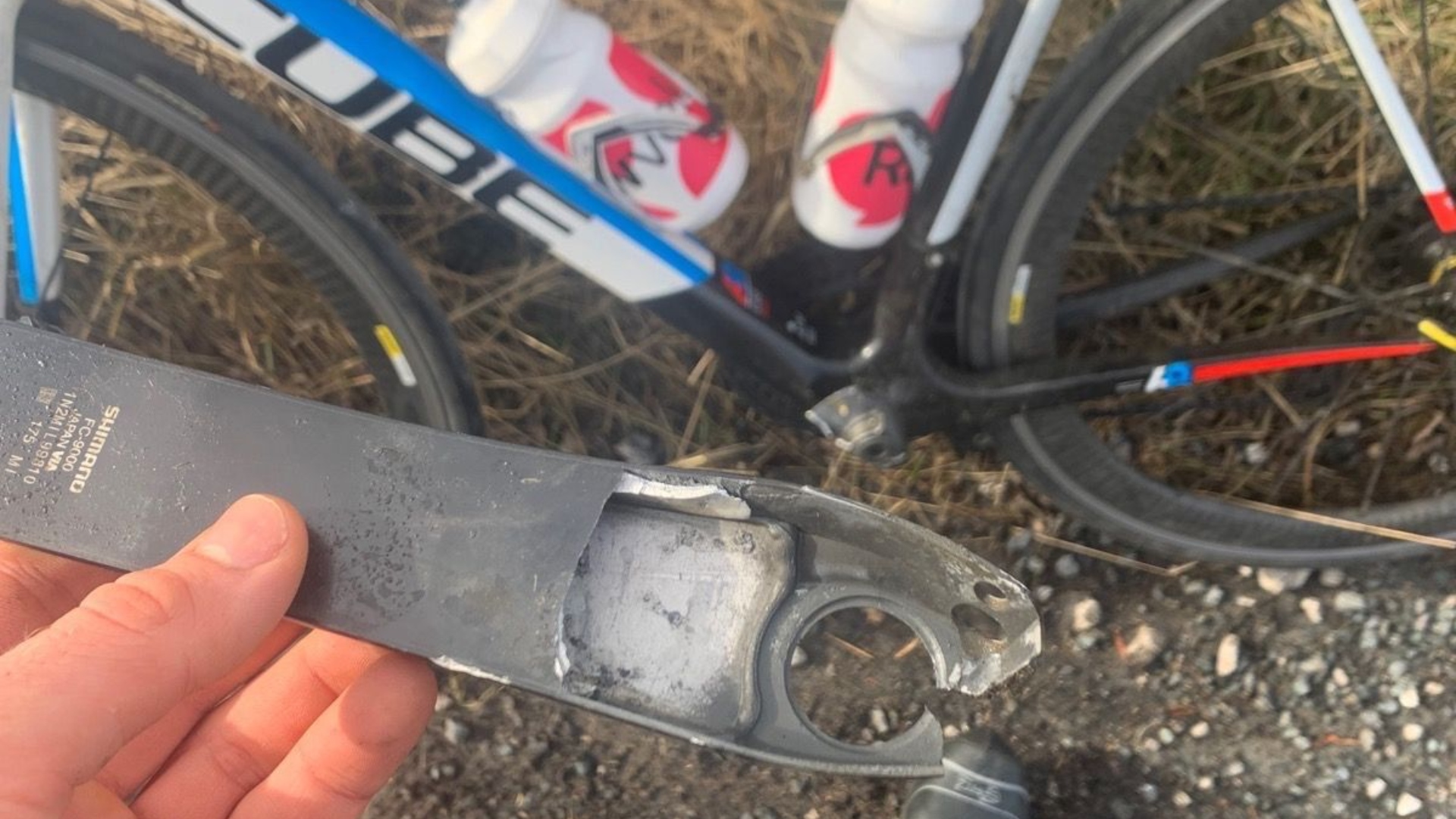
The owner of a local bike shop has called Shimano’s European 'free inspection program' "a gamble", after one customer’s component failed just five months after it was cleared as safe.
The crank, one of around 2.8 million affected, failed without the rider knowing and was previously inspected by a mechanic at Surrey Hills Cycle Works. Business Owner Dave Farmer believes the only way to guarantee the safety of the affected Hollowtech II cranks sold between 2012 and 2019 is "constant inspection".

Farmer told Cycling Weekly that the crank in question was initially inspected in the first week that the programme was issued by Shimano, back in September 2023, where it showed no visible signs of fracturing or debonding, and made no clicking noises under load.
The European 'free inspection programme' - vs a recall of affected cranks in the US - did not require all affected products to be replaced, something which Farmer considers a "gamble" on Shimano’s part. The approach was deemed a "very unusual approach to corrective action", by a legal expert, in an interview with Cycling Weekly.
"It does feel like a bit of a gamble," Farmer told Cycling Weekly, "and personally I don’t like that gamble. I feel that if you have created cranks that can fail, they should all be exchanged."
Last year, Shimano recalled 760,000 Hollowtech II road cranks in the USA and Canada after a reported 4,519 incidents of cranksets separating, resulting in six reported injuries, "including bone fractures, joint displacement and lacerations", according to the United States Consumer Product Safety Commission.
In Europe, Shimano instead opted for a 'free inspection programme', whereby dealers would inspect the crank, and replace it if it was deemed unsafe. Shimano also advises a 'second inspection' one year after the initial inspection, and adds that it recommends "a regular crankset check on your own after the second inspection".
Shimano's 2023 financial report showed costs incurred for inspecting "some bonded 11-speed Hollowtech II road cranksets produced by the Company on and before June 30, 2019 show[ing] bonding separation and delamination, which may produce gap and clearance".
These losses are detailed as 2,762 million Japanese yen, around $18 million or £14 million.
Farmer said that the UK distributor for Shimano - Madison - had been good in honouring replacement cranks, with no instances of warranty being refused, but time scales made it tricky to manage customer expectations.
"We’ve certainly had to tweak the discussion we have with our customers," said Farmer, "now, if anybody approaches us with a crank that needs inspecting, we just take it off and send it straight to [UK distributor] Madison."
"It’s still the responsibility of the rider to constantly inspect their crank, which makes a mockery of having a professional inspect the crank in the first place!" Farmer added.
Whilst Farmer said replacement cranks in standard lengths had generally been with the shop in "two to three weeks," things had been "more tricky" for shorter cranks, such as 165mm lengths. "Timescale is challenging. Any crank that we send off goes into Madison’s que and we have no idea how long that is," he said.

Farmer went on to explain that Shimano’s approach meant that the distributor was left unsure how much stock to hold.
"To defend Madison, it's a complete and total guess for their product manager to kind of order enough stock for the problem. There's absolutely no way of knowing what chainring diameters, what crank lengths to stock."
Cycling Weekly asked Shimano for comment on this case, and the brand told us: "Shimano takes all warranty returns and shared information from IBDs and our service network seriously. Using this information, we can continually monitor the performance of our products in the market. Our priority, of course, is to get cranksets that are unsafe out of the market; only a cranksets that is found to be non-conforming after following the inspection process will be replaced."
It added: "While the interval from the initial inspection to any secondary inspection that takes place is approximately one year, Shimano will always recommend that if you notice anything abnormal even within one year, to stop riding immediately and have it checked by an authorized Shimano dealer."







